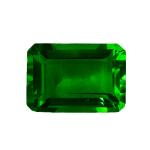May: Emerald
May Birthstone: Emerald
Birthstone Color: Deep Green
Emerald Myths & Historical Facts
The emerald is the birthstone of May. The intense brilliant green of the emerald is as refreshing to the eyes as a spring garden after a Pittsburgh winter.
Many ancient cultures used the emerald as a part of rituals. The Egyptians were known to engrave emeralds with the symbol for foliage to represent eternal youth. These gems were then buried with their dead. The ancient Romans associated the emerald with fertility and rebirth. They used the gem as a dedication to Venus, the goddess of love and beauty.
In the sixteenth century, the Spanish Conquistadors found the native people wearing emeralds larger and more magnificent than any they had ever seen. The Spaniards soon discovered and conquered most of the emerald mines. The Muzo indian mine was in the area known today as Colombia, and it remains the source of the most prized Emerald specimens.
The Emerald is a member of the beryl family of minerals. The green crystals grow slowly within metamorphic rocks and are restricted in size by the rock, making large Emeralds rare and costly. Although this gemstone is relatively hard and durable, it must be protected from blows because the inclusions found within make it susceptible to breaking.
Some people believe that wearing an Emerald brings wisdom, growth, and patience. And as any couple in a long-term relationship would agree, all of these qualities are essential for a successful and lasting love. This may explain why a gift of Emerald for an anniversary -- or anytime -- is considered symbolic of love and fidelity.
Emerald Facts
No other green gemstone rivals emerald’s luxuriant green hue.
Emeralds have been beloved throughout human history, evoking re-birth, renewal, and spring. The word “emerald” comes from the Greek word “smaragdos,” which means “green stone.” Variations of its rich color suggest soothing, lush green gardens. The Roman Emperor Nero is said to have used slices of emerald placed before his eyes to view gladiator fights.
Emerald is a variety of the beryl species and is related to aquamarine and green beryl.
Emeralds have a hardness of 7.5-8.0 on the Mohs Harness Scale.
Emerald is the only stone with a cut named after it.

